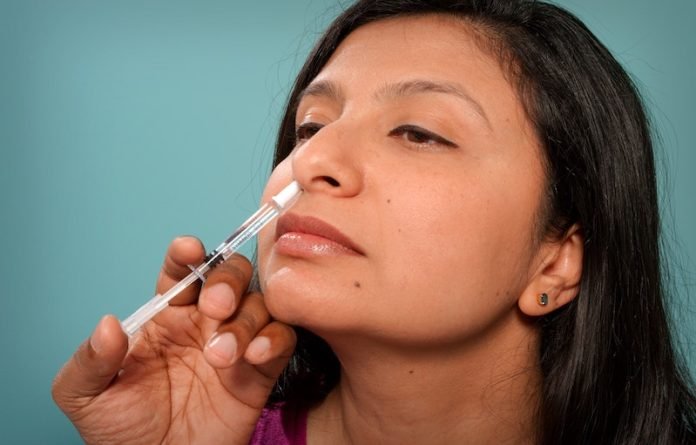
Intramuscular vaccine shots, which are what most people have received to protect against COVID-19 infection, provide a broad-based immune response throughout the body and help avert serious illness.
However, that protection has tended to wane after about four months, leaving people susceptible to breakthrough infections and emerging variants.
In a study from Yale, scientists found a new nasal vaccine can help bolster immune responses to COVID-19 in previously vaccinated animals and reduce viral transmission.
The new vaccine approach known as “prime and spike”—is designed to jumpstart the immune response in the respiratory system, which is the first part of the body to be infected by the virus.
The new “prime” and “spike” approach may help prevent breakthrough infections of vaccinated people by bolstering immune response within the mucosal lining of the respiratory tract, which are the first cells attacked by COVID-19.
(“Prime” refers to the process of injecting the vaccine directly into the muscle, as is typically done. “Spike” refers to a follow-up vaccination with spike proteins, known to derive from the coronavirus, directly into the nostril, where the virus is known to enter the body.)
The team says the nasal vaccine promotes the development of immunity within the respiratory system, which can respond more quickly to infection.
By creating mucosal immunity, the vaccine helps stop the virus at its entry point, rather than waiting until later to fight back.
In the study, the team delivered the nasal vaccine to both vaccinated and unvaccinated mice. They found increased immune system response in the respiratory tracks of vaccinated mice only.
Mice that had not been previously vaccinated, and vaccinated mice that did not receive nasal vaccine, died from infection.
Meanwhile, mice that received the intranasal spike booster were completely protected from death and disease.
In hamsters that received the nasal vaccine, the Yale team found the decreased duration and the total amount of viral shedding, which is when an infected individual releases copies of the virus including through sneezing or coughing.
Hamsters vaccinated with the prime and spike method were also found to have reduced viral loads when housed in the same cage with infected, unvaccinated hamsters, suggesting that the strategy reduces trains of transmission.
Researchers also found increased breadth of immune response among animals that received the nasal vaccine, indicating that the approach would be effective against a broad spectrum of coronaviruses with pandemic potential.
The team says that the Yale approach does not use live viruses, viral vectors, or adjuvants, which may make the vaccine safer.
If you care about COVID, please read studies about how vitamin B may help fight COVID-19, and this face mask can capture and deactivate COVID-19 virus.
For more information about COVID, please see recent studies that CBD from cannabis may inhibit COVID-19, and results showing a universal antibody therapy to fight all COVID-19 variants.
The study was conducted by Dr. Benjamin Goldman-Israelow et al and published in the journal Science.
Copyright © 2022 Knowridge Science Report. All rights reserved.



